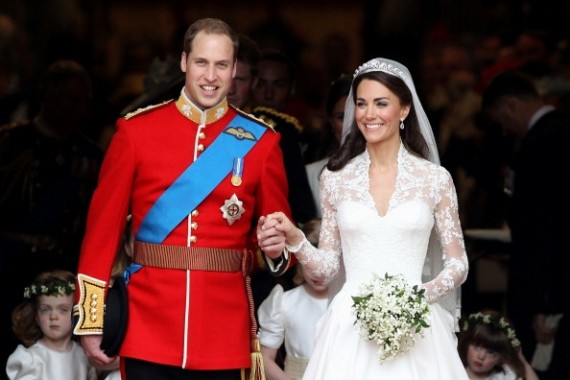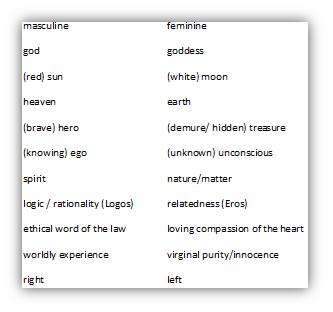One of the central concepts in analytical psychology is that of the coniunctio, a Latin term meaning conjunction or union. In essence the idea is this: instead of striving to achieve some elevated form of perfection, i.e. in our personality, profession, or relationships, our innermost need is actually one of wholeness. We long to unite ourselves with that which is missing or “Other.” Only once this union is worked toward and achieved do we feel more complete, more whole and as a result live fuller more authentic lives.
In The Myth of the Goddess: Evolution of an Image, authors Anne Baring and Jules Cashford give vivid examples of how this inner archetypal idea(l) of union was collectively imaged throughout much of history as a sacred marriage between a feminine goddess figure and her male lover or god consort. The authors write that this rite of sacred marriage was brought to life in a temple precinct every spring so that a feeling not only of union but re-birth or re-union was produced in participating spectators after a cold and lifeless winter.
In discussing the form this sacred marriage then took in Old Testament times, the authors write:
“The image of human union was anchored in the symbolic union of heaven and earth, celebrated annually in the temple precinct between the king and the high priestess, who personified the goddess. Even now, the resonance of this ceremony is apparent in the intense excitement generated by a royal marriage. The psyche appears to need a ‘sacred’ image of wholeness to preserve its balance, which depends upon its maintaining an equable and dynamic relationship between the feminine and masculine archetypes.”[1]
Turning to the present day, no doubt some people dismiss all the attention given to the recent British nuptials of Will and Kate as nothing but a fairy tale wedding watched by individuals who have nothing better to do with their time; this event is little more than a royal form of celebrity worship with its trappings of wealth, power, prestige, and so on. However, maybe the fact that millions, perhaps even billions, of spectators stopped what they were doing to watch the ceremony signifies a deeper psychological need at work, one similar to what has been discussed above. [2]
Relatedly, and to put in a good word for fairy tales, Baring and Cashford later note that tales such as Cinderella serve a very important and even timely function:
“What is the relevance of the story of Cinderella in the new age that is dawning? The image of the sacred marriage between nature and spirit, goddess and god, has been notably absent in the orthodox Judaeo-Christian tradition, and this has inflicted a deep wound on the soul, which has yet to be healed. The fairy-tale restores the image of union between the two primary archetypes and has, so to speak, ‘carried’ [the idea of union] for our culture until such time as the need for it could become conscious.”[3]
So, what are some of the opposing images and energies the recent fairy tale-like British royal wedding might be uniting and thereby “carrying” for today’s soul in the Western world? Look again at the above photo before considering the following list.
Assuredly, this list could be longer. It has been put together to hopefully facilitate a deeper appreciation for why an event like the royal wedding has such a powerful hold on our imagination. Perhaps many if not most spectators of these nuptials are unaware of either the underlying archetypal power of the opposites or the psyche’s related desire for an image of wholeness and balance. (This, of course, was one of the inspirations for the present post — to make this power and desire more conscious).
Finally, it seems important today to note that the psychological or symbolic understanding of ceremonies such as the sacred marriage is itself contrasted with a literal understanding of the same. In this latter way of seeing things, to the degree (if at all) Will and Kate are accepted as representations of masculine and feminine energies, sun and moon, ego and the unknown unconscious, logic and eros relatedness, head thinking and heart love, and so on, these opposites are nevertheless somehow inseparable from biology. Psychology is thus literally determined by one’s sex organs, and as a result no true coniunctio can occur between two individuals engaged in a same sex relationship. This is not the position taken by Mythfire in general or in this specific post. To be blunt: the energies included in the above box have time and again proven themselves to be independent of one’s sex. (A longer discussion of this topic might gently suggest that such a sex-centric viewpoint is not only more literal, less psychological but also not that dissimilar from the theological notion of idolatry; to the extent that we identify the concrete image or thing, i.e. a sexed male or female, with its powerful underlying energies and give preeminence to this image over these same energies, we have created a modern day version of the Biblical golden calf. The danger in the present case as in times past is, then, one of missing out on the truly sacred mysteries of love and life which the concrete figures merely represent.)
In short, it is most unfortunate that the discussion of marriage so often falls back on a literalism born of ego-based fears when a deeper and more sacred appreciation of the psyche or soul is available to us here and now. A more symbolic or psychological understanding of reality would reveal this truism: regardless of one’s sexual orientation only through an acceptance of and a union with what’s missing, i.e. the “Other,” is authentic wholeness attainable on the human plane.
—–
Addendum: Much more could be said in support of a symbolic rather than literalistic understanding of the royal marriage. For example, “right” and “left” were added to the above list of opposites when Mythfire realized that the bride with all of her symbolic traits traditionally stands to the left of the groom during the wedding ceremony as well as on other occasions. Also, in many countries the wedding ring is placed on the ring finger of the left hand which for millennia has been associated with the heart, feeling, and the sometimes dark and scary unknown, i.e. the contents of the unconscious. In other words, via the wedding ring, we see that the energies in the “right”column such as ego, logic, et cetera, must serve, honor, and relate meaningfully to those in the “left” if a true union or coniunctio is to occur.[4]
——
Next Monday: Cave of Forgotten Dreams
[1]Baring, Anne and Jules Cashford. The Myth of the Goddess: Evolution of an Image. London: Viking, 1991: 479.
[2] Projected to draw two billion viewers worldwide, the ceremony was watched by at least twenty-four million people in the U.K., (http://www.variety.com/article/VR1118036201?refCatId=4076&query=William+and+Kate+wedding), a number almost matched in the U.S. (http://www.variety.com/article/VR1118036195?refCatId=14&query=William+and+Kate+wedding). For anyone who wishes to see (or relive) the highlights, one place to turn is here: http://www.pbs.org/newshour/rundown/2011/04/watch-royal-wedding.html. Or, if you really just want to see some of the fancy hats worn to the wedding, search no more: http://www.newnownext.com/2011/04/29/royal-wedding-pics-hats-silly-excessive-but-so-much-fun-to-watch-congrats-will-kate/.
[3] Ibid., 657. Also, to the degree that viewers have wondered what kind of offspring Will and Kate will have they may be giving voice to another archetypal notion: the coniunctio or union of opposites gives birth to a divine child, i.e. someone in whom the opposites function naturally, harmoniously, and creatively.
[4] While preparing this post, Mythfire inadvertently discovered another archetypal dynamic at work during the royal marriage: adulation. A footnote from Jung was discovered in some of his alchemical writings — which superficially have little to do with sacred marriage: “Adulatio [the Latin term for adulation] usually refers to the love-play of the royal marriage.” It is almost impossible to read this statement without thinking of the royal newlyweds kissing not once but twice – to the delight of spectators below. For the quote see CW 13: 441, fn. 12.



